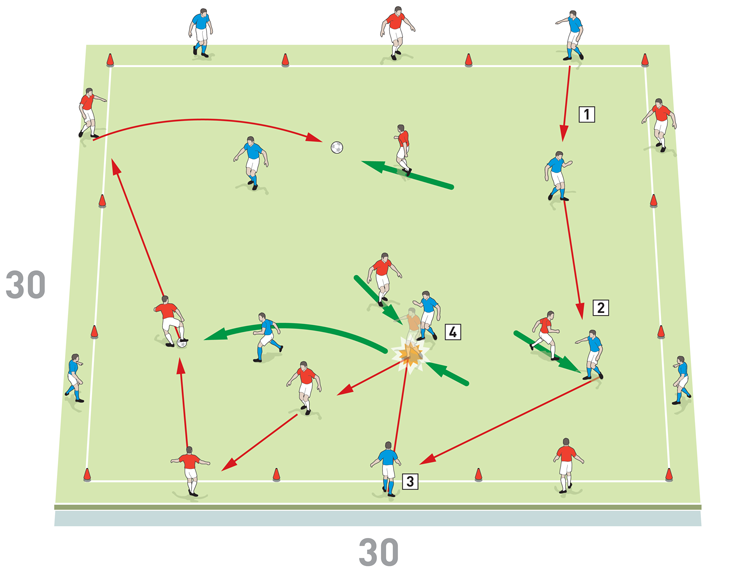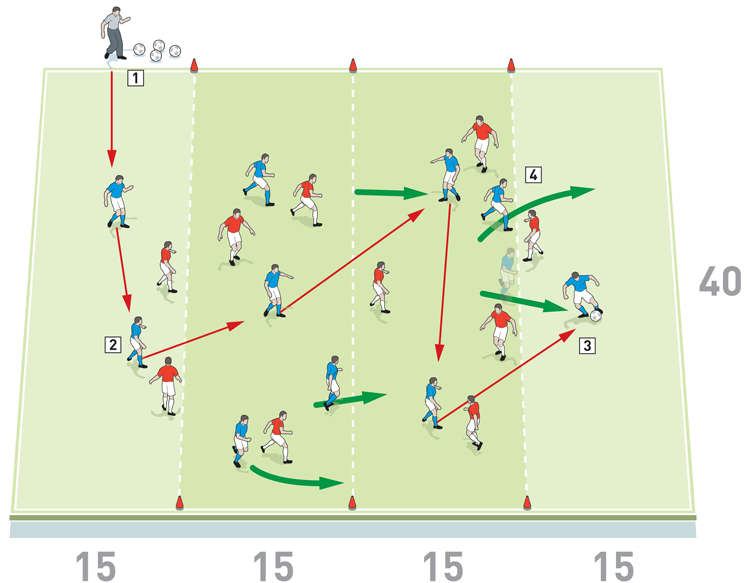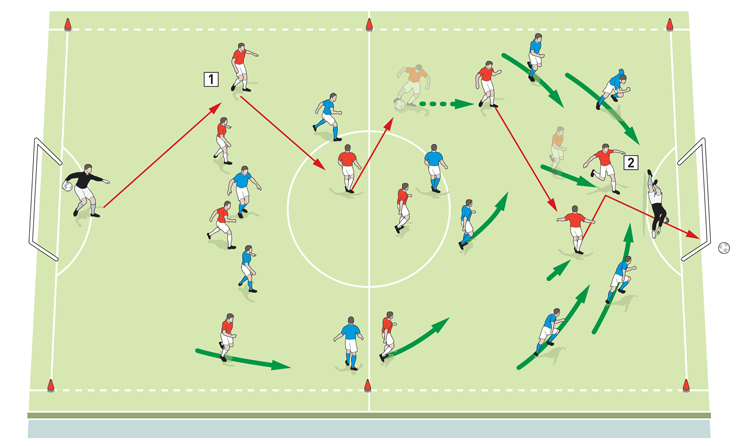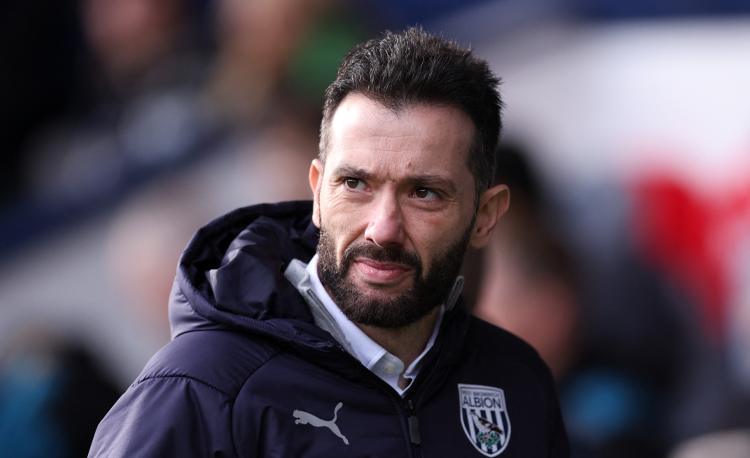You are viewing 1 of your 1 free articles
Playing off the front men
Get your team playing off the front men to get in behind the opposition’s defence. Also, help develop possession to create good opportunities to play into either of the two strikers up front
| Area | Up to 60x40 yards |
| Equipment | Balls, bibs, cones, 2 full size goals |
| No. of Players | 20 players + 2 goalkeepers |
| Session Time | Total: 60mins Each part: 20mins |
This session is all about playing off the front men to get in behind the opposition’s defence. It will also help develop possession to create good opportunities to play into either of the two strikers up front – and then it works to improve combination play between the strikers or link play with midfielders to get in behind the opposition. It will have your team looking to slide balls between defenders or using wingers in wide areas.
It possesses all the key elements of the game and is very match realistic for players. The closer you keep training sessions to the game itself, the more engaging it is for players, and hopefully they can relate the work to what you want them to replicate in a real game.
With the session taking place with 20 players in a relatively small area, it will ensure that it is performed at a good tempo because players must move the ball quickly and move off the ball to achieve success.
This could be used as a session for a Tuesday or Thursday in a normal week with the team playing on a Saturday. It can be used to try to build relationships with players within the team, especially a front two partnership. It is also an ideal session for trying things out with new signings and partnerships within the team. It would generally be a training session focused on our approach when playing in a 4-4-2 formation and how we want to play when we have the ball.
What do I get the players to do?
Overload game
We would tend to use this overload practice after a warm-up (not shown). Set up an area of 30x30 yards. We are using 20 players, divided into two teams of 10. Five players from each team alternate around the outside, while a 5v5 is played inside the area, as shown [1].
The aim for each team is to keep possession by moving the ball quickly with their team mates.
1

2. Players must move the ball quickly using their outside men for support, making it a 10v5 overload to the team in possession
3. Outside players must pass to a player in the centre. They cannot pass to another outside player
4. The opposition press and if they get hold of the ball they become the new team in possession
Play for two minutes before switching the players, so the outside men get their two minutes in the area. The numbers of touches players take can be conditioned accordingly.
What do I get the players to do next?
10v10 game
Set up a 60x40 playing area and divide it into four zones, as shown [2].
It’s 10v10 and players now set up in their respective shapes for this directional game.
2

2. It is important that the ball is played forwards whenever possible, in order to get it quickly to the strikers.
3. Players score by passing to a team mate in the end zone they are attacking. The ball must be under control to score
4. To replicate a match, the end zones also mark offsides, so players must time their runs to make sure they are not caught offside
What are the key things to look out for?
The key to getting the ball to the strikers in the 10v10 game is the ability of the defenders and the midfielders to play forward – body shape is important so when players receive the ball they can see both the passer of the ball and the forward players. This means body shape must be side on to the pass with first touch key to the movement and passing ability of the player.
The positioning of the midfield players is also important. It is vital that they are in positions to receive the pass and have options further forward, as this is key to moving the ball through the zones and setting up the strikers with a through ball on goal.
How would you put this into a game situation?
Set up on your pitch, using the space between the two penalty areas, with the wings coned off, as shown [3].
Play a game with normal 11v11 rules but with the twist that if the ball is played to the striker in the build up to a goal, it counts double. This reinforces the main theme of the session.
Encourage quick passing into strikers and movement to support them from the midfielders. You want to see teams attacking and scoring.
3

2. If the ball is played to one of the strikers in the build up to a goal, it counts double
Related Files
Editor's Picks
Using the goalkeeper in build-up play
Pressing principles
Intensive boxes drill with goals
Penetrating the final third
Creating and finishing
My philosophy
Pressing initiation
Compact team movement
Defensive organisation
Coaches' Testimonials

Alan Pardew

Arsène Wenger

Brendan Rodgers

Carlos Carvalhal

José Mourinho

Jürgen Klopp

Pep Guardiola

Roy Hodgson

Sir Alex Ferguson

Steven Gerrard
Coaches' Testimonials

Gerald Kearney, Downtown Las Vegas Soccer Club

Paul Butler, Florida, USA

Rick Shields, Springboro, USA

Tony Green, Pierrefonds Titans, Quebec, Canada
Join the world's leading coaches and managers and discover for yourself one of the best kept secrets in coaching. No other training tool on the planet is written or read by the calibre of names you’ll find in Elite Soccer.
In a recent survey 92% of subscribers said Elite Soccer makes them more confident, 89% said it makes them a more effective coach and 91% said it makes them more inspired.
Get Monthly Inspiration
All the latest techniques and approaches
Since 2010 Elite Soccer has given subscribers exclusive insight into the training ground practices of the world’s best coaches. Published in partnership with the League Managers Association we have unparalleled access to the leading lights in the English leagues, as well as a host of international managers.
Elite Soccer exclusively features sessions written by the coaches themselves. There are no observed sessions and no sessions “in the style of”, just first-hand advice delivered direct to you from the coach.









